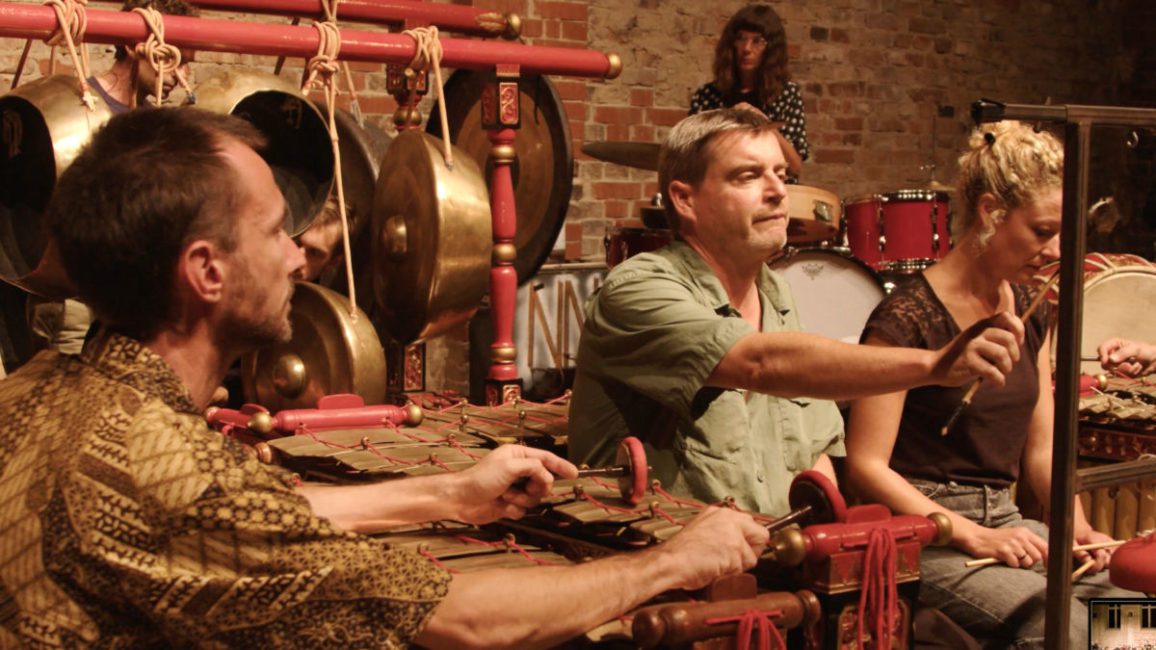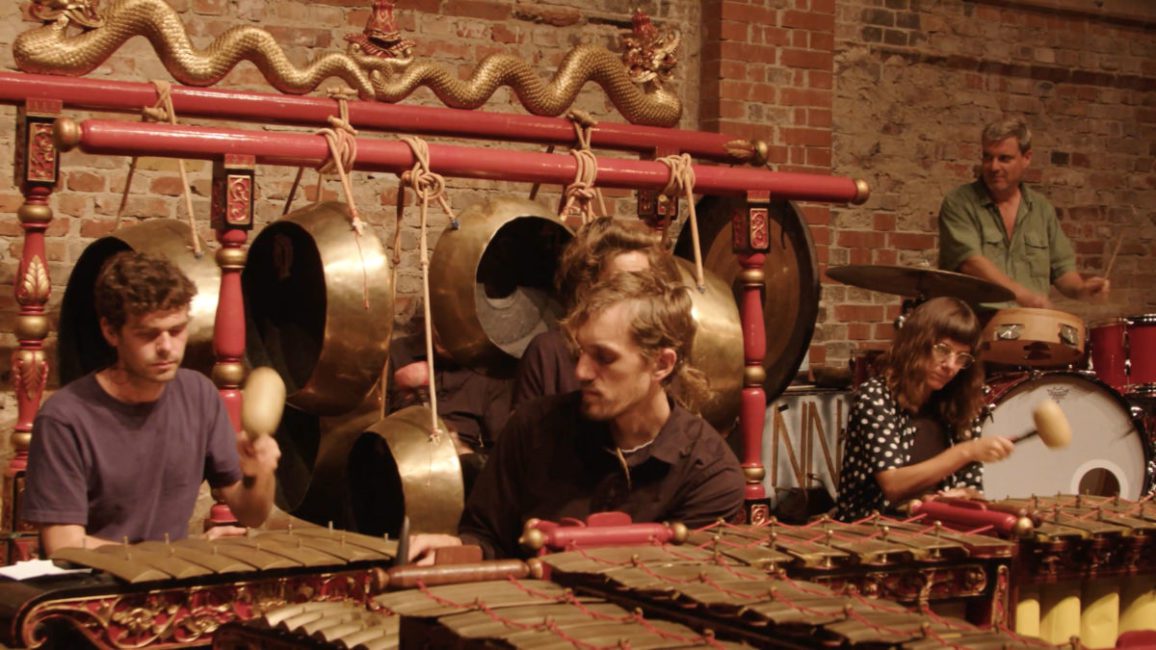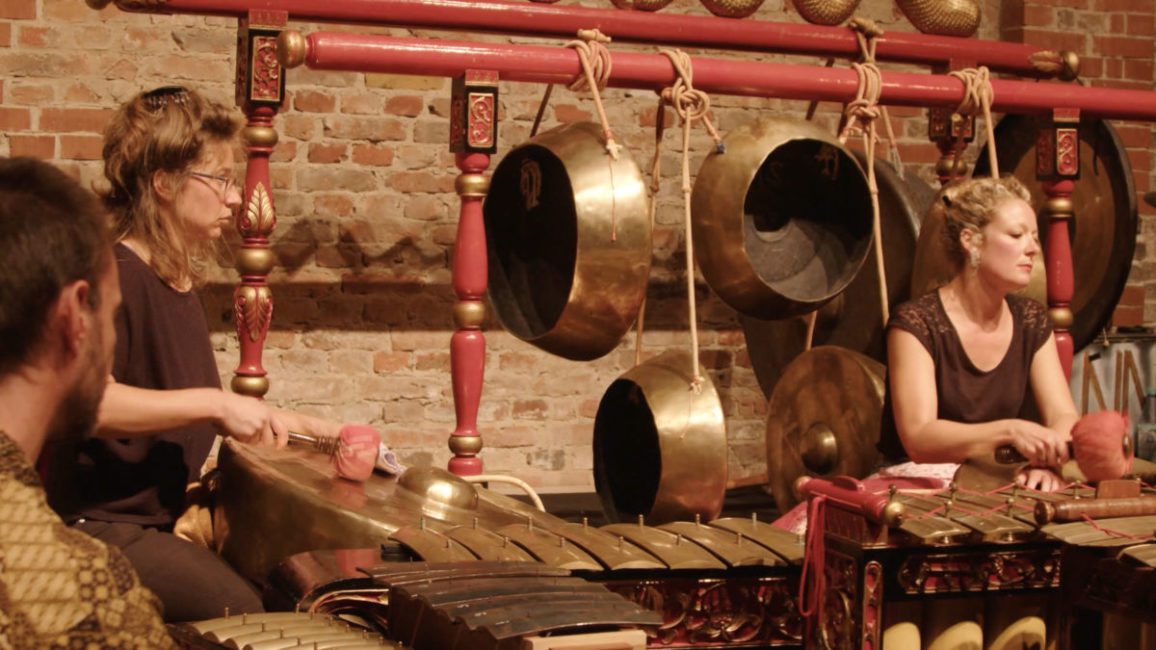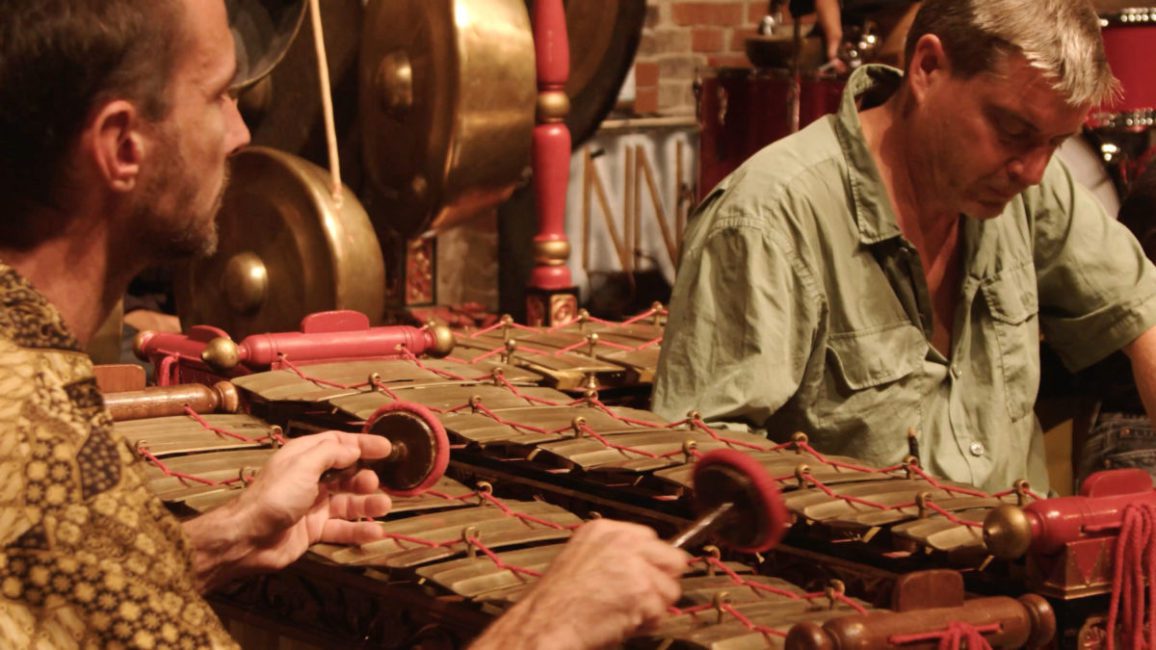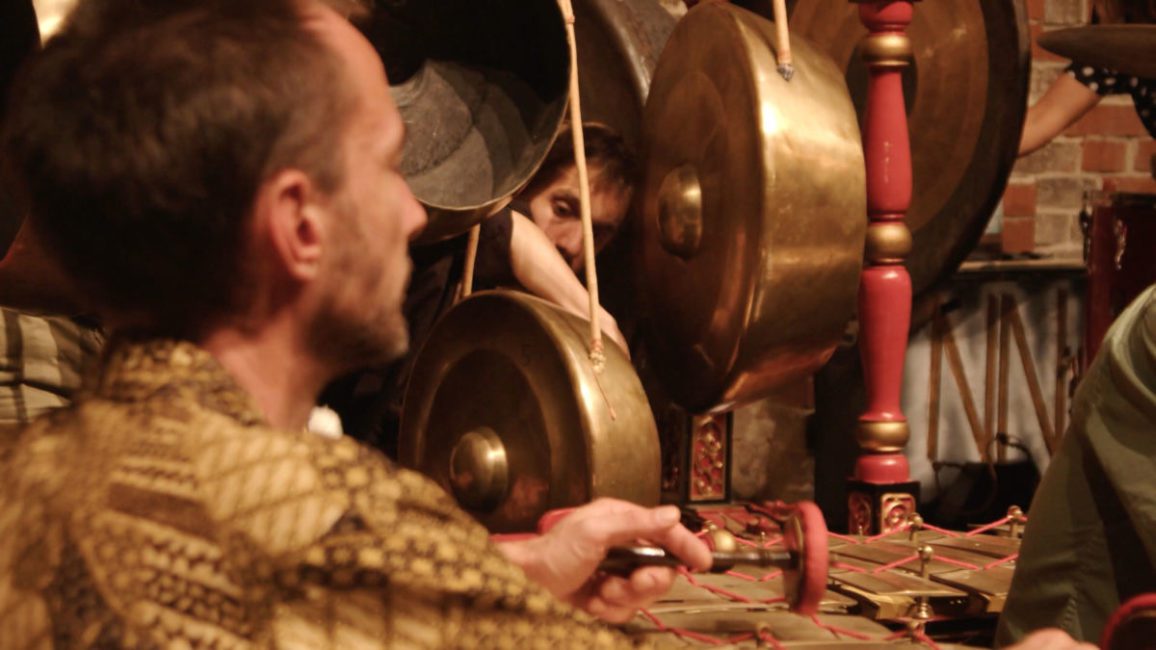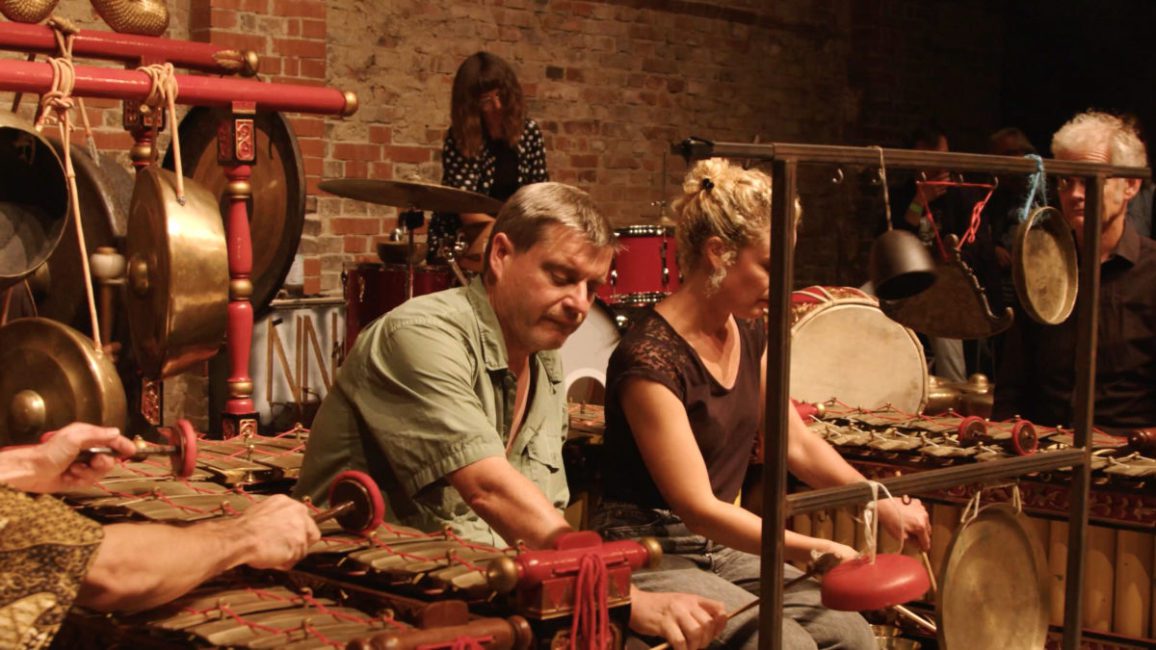This year at Inverted Audio we have been publishing a series of articles in collaboration with REMAIIN, co-funded by the Creative Europe Programme. The organisation, alongside its involvement with small festivals throughout the continent, runs small, one-shot events and educational programmes to provide the curious with resources to learn about the music-making techniques and structures from cultures outside Europe.
In seeking to tie off the collaboration with an in-depth feature with a relevant musician, we reached out to Will Guthrie of Ensemble Nist-Nah for a conversation about the cross-pollination of European music. Nist-Nah are a large, changing group of musicians, assembled by Guthrie, who’ve played across Europe throughout the year, from REMAIIN & Kontraklang associated event at St Elizabeth Church in Berlin and Lisbon’s OUT.FEST to gig destinations across the centre of the continent and into Eastern Europe.
Speaking with Will Guthrie is educative. Scarcely within 10 minutes of discussion with the “band leader”, perhaps, of Ensemble Nist-Nah and more than a few grey areas in my knowledge of music are coloured in with brighter tones. It’s unsurprising: he’s got release credits on well over 40 albums, recorded in different groups and guises, and more than once alongside names more familiar to the electronic aficionado, such as Mark Fell and Oren Ambarchi.
The first pitfall I make for myself is preparing questions on cultural appropriation for the interview; the second, making the mistake of referring to the group’s music as “gamelan music”. The issues of the former are annulled by the latter, as Guthrie explains: firstly, gamelan is not a genre but an instrument, which is used in hundreds of different styles of music within it’s birthplace alone; secondly, it’s apparent that, despite reading the tag on Bandcamp and Discogs, and the gamelan being a staple of their performances, Nist-Nah Ensemble do not play “gamelan music”.
Guthrie tells me (in somewhat grated patience – it’s clear he’s walked this road more than a few time) that the Ensemble performs “hybrid percussion” music, drawing inspiration not just from the Asian and Asian subcontinent’s musical heritage, and not just from Guthrie’s lifetime of experience playing percussion, but from broader circles of sound and musical heritage than either one alone. The importance of the entire group’s musical background to the project is stated by Guthrie’s continual referral to the experiences of his friends within the Ensemble, which come often in-between his anecdotes.
Guthrie provides me with a listening list of Javanese music, after the interview — flipping between his recommended starting points and personal favourites and the music released on the ‘Elders‘ album from Nist-Nah, or video footage of their performances, the differences between traditional music for gamelan instruments and that of the Ensemble are stark.
I’ve stated already that speaking with Guthrie is educative, and alongside this interview, which pries open the lid on a lot of burning questions one might have regarding the project and it’s (verified) authenticity, we present this video of a Ensemble Nist-Nah live at St Elizabeth Church, Berlin.
In presenting the interview and video we hope to align Will’s messages in the interview with direct teachings applicable to topics far more numerous than playing the gamelan alone, and REMAIIN’s principle directive of furthering the knowledge and techniques from outside Europe used by Western practitioners of music.
Before diving into the interview, we’ll leave one last quote from Guthrie: “Dealing into another culture’s music (or in this case more the instruments than the music) is always dangerous, but, as they say in ethnomusicology, the first step is a failure! I like that idea too…”
Interview by Freddie Hudson
"The whole experience of Nist-Nah is that it's a big mix between influences from various musics from Indonesia, and elsewhere in Asia, mixed with modern contemporary percussion approaches and more experimental practice"
The first thing I’d like to understand is how you decided to set up the ensemble. The focus of REMAIIN is to “investigate non-European cultural influences on the experimental, avant-garde and innovative music of the present and the past”, so I’m curious where the inspiration came from, either individually or as a group…
For me the inspiration was that I am not from Europe – I grew up in Melbourne, Australia in an incredibly multicultural environment, multicultural musically as well – music from other places wasn’t something that you read about in a book. I was actually playing in many different contexts from a very young age, including African pop bands, a flamenco dance company, Javanese gamelan, bar mitzvahs… I mean, I don’t know if you’re from London?
I’m from the countryside actually so no, not much organic exposure to multicultural music!
The whole concept of immigration and integration is a very different thing in England versus Australia. It very much coloured our musical upbringings when we — I say we because most people like me, who studied jazz — were involved in lots of different musics from the get-go.
So you were formally trained as a jazz musician?
I studied, yeah, I was taking drum lessons, and I went to music school. It wasn’t even jazz it was called “improvisation”, and from then on we had this whole thing about “what does it mean to be white, middle class people studying jazz?”, what does it mean to have some sort of “Australian jazz identity”, and what does it mean being in a Black country?
It’s a bit amusing about Nist-Nah because a lot of people are bringing this up, about us using gamelan, which is something I totally understand and respect. From my part, I’ve been asking these questions since I started playing music, it’s not at all something directly linked with gamelan: it’s been my whole career I’ve been asking myself such questions about the music I play and the music I am attracted to. Especially, studying jazz as a young white Australian, you’re forced to ask yourself those questions about cultural appropriation from the beginning.
There’s another guy in Nist-Nah named Mark Lockett, who is English, he’s a lot older than me but he kind of also had a very similar musical background to me in playing different kinds of music, but from different places [than I], from India and Pakistan – based on the immigration from where he was growing up, Birmingham and London.
Those kinds of experiences are very different from those of the French people in the band, who mostly kind of studied through the eyes of Western classical music. It’s not really my background at all, I tried to do everything possible to avoid that!
It’s really interesting that this has been something introduced to you from the start, I’ve made friends with people in my time who’ve been trained in jazz conservatories and they were not necessarily being instructed to think about this as an aspect, not directly asked to think about the issues of appropriation or colonial politics in music basically. Also, it’s interesting that you’ve got a collective of people around you that have got similar but different experiences, or who’ve gone relatively through the dark side of that in some ways…
Well, I’m not saying that I’ve gone through the dark side…
My words, not yours!
It is a really complex subject though, and the whole thing about it for me personally is that I’ve never been comfortable playing traditional music, including even more straight-ahead jazz, without people from the culture of where that music may have originated from. That’s been my take on it.
The whole thing about Nist-Nah is that we don’t play traditional music. I know other people in the group that don’t agree with me at all; Mark is one, he’s played lots of traditional music, he knows a lot more about traditional gamelan music than me, and he doesn’t have a problem with [playing] it.
Maybe it’s because I grew up in Australia where there’s this horrendous history of completely ignoring Aboriginal culture, that maybe I’m trying to be more sensitive to that — I’m not saying I’m doing a good job of it, I’m just saying I’m aware of the issues.
So, you’re making modern gamelan, or non-traditional gamelan? How would you put it?
No, I wouldn’t even call it gamelan, I would call it hybrid percussion music. Nist-Nah is coming out of my experience of over 20 years of exploration around percussion, it’s not like “now I’m doing a gamelan project”, I’ve been using gongs, resonant metals and tuned percussion since day one.
The whole thing about using the gamelan is a very particular sound, and of course it comes out of a certain culture and a certain music is played on these instruments, but I would kind of argue that it is percussion music somehow and the whole experience of Nist-Nah is that it’s a big mix between influences from various musics from Indonesia, and elsewhere in Asia, mixed with modern contemporary percussion approaches and more experimental practice.
There’s a big chapter of people using percussion – for me someone like Roscoe Mitchell from the Art Ensemble of Chicago has been a massive influence on the project. He used a lot of gongs, found metal, tuned percussion, in combination with more traditional instruments — for me that’s a really important chapter in the history of modern percussion music. All of those influences are very much a part of Nist-Nah as well.
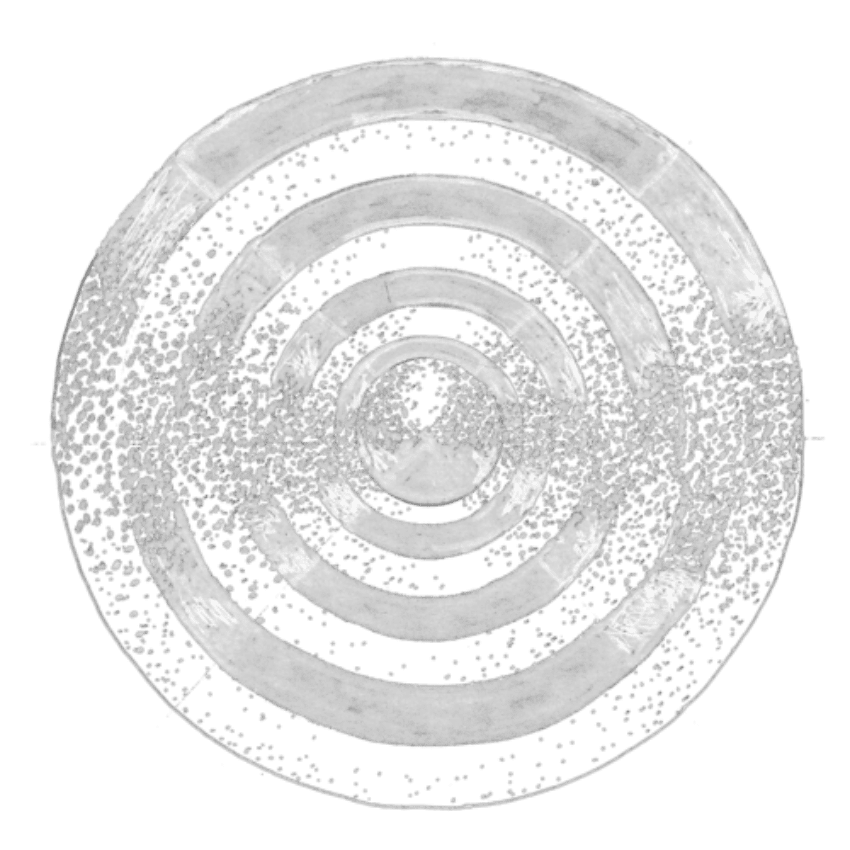
"The gamelan is central to the group, but then we’re also using drum kits, all the kind of percussion stuff you’d find with people basically like me, who’ve been experimenting with other percussion and Asian percussion, for a long time, mixed with the drum kit"
And with Roscoe Mitchell, do you know whether that was a move on their part to distance themselves from using instruments like the traditional percussion kit which was taken by jazz from classically trained western musics, and whether that was something they were trying to do to distance themselves from that circle of things?
That started in the mid ’60’s, they were coming out of bebop and hard bop, and at the start of free jazz and more open open ways of playing jazz. At the start they didn’t have a drummer. There were four, all of whom were playing different elements of percussion, and I think you know at that time there was an explosion of thinking about what the instruments could be.
They were all multi-instrumentalists, they had a lot of instruments including percussion, and they treated percussion — especially in Roscoe’s music, tuned percussion — on an equal musical value with the other instruments: the saxophone, the trumpet, and the contra bass. I think it was very innovative in terms of percussion music. Most people who’ve been down that road end up finding out about the Art Ensemble because they were huge in that area. So, the influences are far and wide in that way.
I have to admit to some level of ignorance about the composition of your band in that way but I’d like to hear more from you about what is going on within the troupe and how you approach — from the research I did on Nist-Nah there was one article there was some information about the found instruments, or modified objects that make sound, that are being used as part of the ensemble. It’d be interesting to get a few direct examples of some things that you or others in the group use, to help paint the picture.
Firstly about the musicians, people are coming from quite diverse backgrounds, so there are a few coming from close to where I come from, from jazz, free jazz, experimental music practice, a few from contemporary classical percussionist background, there’s a few that have practiced a lot of various… I don’t like the term “World Music”, but [they] have studied South Indian classical music and have tried to integrate a lot of stuff from the music they’re interested in as well.
There’s two people — Arno Tukiman and Mark Lockett — they’re the two that have practised Gamelan the most in the group, studied a lot in Indonesia and stuff, and Thibault Florent and I, one of the others in the group, a bit less than Ano and Mark. Everyone brings their own musical baggage to the group, in terms of instruments as well.
The gamelan is central to the group, but then we’re also using drum kits, all the kind of percussion stuff you’d find with people basically like me, who’ve been experimenting with other percussion and Asian percussion, for a long time, mixed with the drum kit.
In general there’s the Gamelan, there’s two drum kits, there’s a bunch of other percussion mixed with found metals stuff, wood, wood-type instruments. When you’re looking at percussion who’ve got the main families of metal, wood, and everything that’s skin like the drums. We’ve been using stones, bamboo wood, a whole bunch of different stuff.
I’m personally quite curious how you think your approach is taking you away from the appropriative models of music making in this area, beyond simply being a troupe of mixed nationalities and applying yourselves by not just using the Gamelan instruments, what’s taking you into a more adventurous aspect of the sound you’re doing?
Have you listened to the music? That’s the best place to start. Listen to traditional Javanese music, then listen to our music. I’d be surprised if you find many similarities. You’d hear the instrument in common for sure; in terms of the music, I think it’s pretty different. I don’t know any Gamelan groups doing this kind of music in Indonesia.
There’ve been many different collaborations between Indonesian musicians and Westerners, and it was my intention in the start to have Indonesians in the group, which didn’t work out because of COVID, and then the group kind of had to change into something else. [We were] confronted with the problem, “do I keep going with this idea?”, which in the end we decided to do.
For me it comes back to traditional music. Personally the answer’s really clear to me: I’ve never played traditional music from another culture without [playing with] people from that culture. It’s not something I’m comfortable doing at all. The idea of putting my name on a project that doesn’t bring something pretty different with instruments… it’s not what I’m comfortable with at all, with Nist-Nah or any other project.

"A lot of the Javanese classical music is kind of dreamy, slow, with tempo changes, so we work on elements of that in the music. I always try to approach this stuff with tact and class (laughs), not just fucking ripping it off"
Do you have any recommendations for good starting points with listening to traditional gamelan music? I’ve listened to some before, but I do lack a bit of standard knowledge I guess.
Well, there’s lots, I’ll send some links, but it’s worth researching a bit too: there’s not a single gamelan music, gamelan is an instrument. So there’s the whole thing of coming at it like “[you’re] playing someone else’s music”: we’re not, we’re using certain instruments from other places. Gamelan is the instrument itself, and there’s many styles of music.
There’s classical Javanese music, there’s music played in villages for purification reasons, with shamans, there’s music that is used as an accompaniment for shadow puppets, there’s music that’s used for religious ceremonies, so there’s not one music — and that’s just from Java.
You go to Bali, and it’s completely different, with different instruments, different music, like 20 other different styles, it’s an incredibly rich culture in music, one of the richest places — probably the richest place I’ve ever been [to] actually. To say there’s gamelan music, it’s an error: it’s like saying there’s classical music… there’s a whole bunch of different styles.
I appreciate the education there! I’d love to see the project, I’ve had some time to listen, but I would love to get a direct opinion of yourself, about the project’s objectives.
Every piece is using different approaches. We are influenced and informed by a whole bunch of different music but, as opposed to trying to take different or single elements of the music, from Java for example, we’re trying to work with principles present throughout Javanese music, and a whole bunch of different music as well.
Not even talking about Javanese music but Balinese, a lot of the time they’re working on this thing called ‘interlocking patterns’. You’ll have a musical phrase played by one person, and you’ll have someone else playing the same phrase but one beat later, and they kind of sink into each other like that, so it becomes one phrase played by two people.
There’s a chapter in the Shelter Press ‘Resonances‘ book about how an early funk and soul duo said exactly the same thing; it was necessary for a drummer and bass player to be in such a synchronicity for the full effect to be achieved.
It’s in most music to be honest. There’s elements of it in a lot of African percussion music, that’s just one example. In a couple of our pieces, between the two drum kits we are often playing in ‘mirror style’, where you’re mirroring the other person, not at the same time. So you have two drums hitting into each other in stereo, because there’s one on each side [of the performance area]. And this could just be the rhythmic part of the piece, and throughout the rest of the group you’ve got a bunch of other stuff going on, but in some pieces we might use aspects of that concept throughout all of the different instruments.
That’s one example of one piece which works on these types of ideas. A lot of the Javanese classical music is kind of dreamy, slow, with tempo changes, so we work on elements of that in the music. I always try to approach this stuff with tact and class (laughs), not just fucking ripping it off…
So you’ll have a point of meditation where you’ll think about how you can take – or not take but learn – from aspects of other music and render it in a novel way?
For sure, so like I said about the African percussion, a lot of these principles are present throughout many many different types of music so you’re always referencing when you’re actually studying music: if you want to just fucking play bits of this and bits of that, you can do what you want, but when you actually start studying different styles, which most of us in the group have, you make links between all of this stuff, links between certain rhythmical stuff that’s present throughout many different styles and approaches of music — throughout history, you know, throughout the history of music.
That’s kind of my main approach to music full-stop, not just with Nist-Nah. I’ve studied and practiced a lot of different music just to try to make sense of all these different things and bring them together in a coherent way.
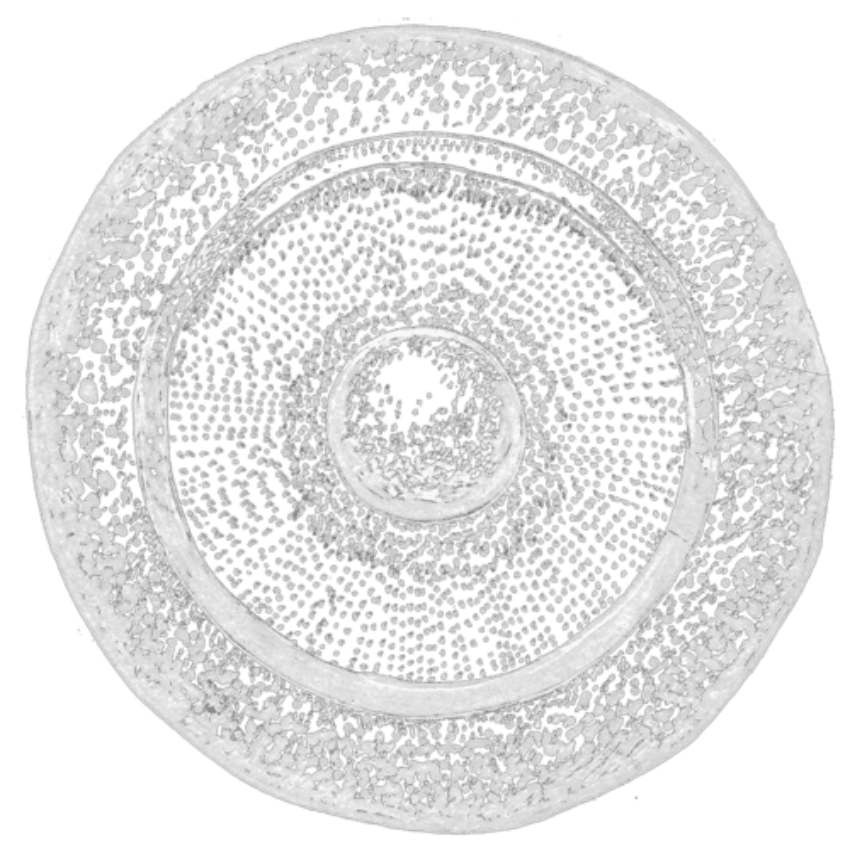
"Music is very inclusive in Indonesia. The role of the musician, it’s not this thing like “The Artist” as it is in Europe. Nearly no one lives off music over there, no one earns any money off that, and it’s kind of like anyone can play and participate"
Something that’s always in my mind when I’m watching — what I expect from you, hearing you here — stuff that’s unscripted, how do you begin the process of improvising “within the lines”? I imagine you’re all consummate musicians with lots of years of practice playing in this certain setting, so it might not seem so pertinent. But, I often find myself talking with people that aren’t trained musicians and asking “How much of this is utterly improvised, how much is an echo of rehearsal sessions?”. Is it the situation that you’re waiting for one pattern to come out before moving onto the next movement?
It’s kind of that to be honest. Each piece is pretty different, and everyone has a job to do, as such. Sometimes that job is basically carte blanche; that person can do whatever they want. Usually it’s framed in terms of the choice of sounds, and the approach. Then, in a lot of the pieces you’ll have specific things to do: for example in Nist-Nah, me and Amelie, the other drummer who plays sometimes (the other drummer often changes), we’ll have certain specific rhythmic patterns that we have to play with and specific ways they have to interact with each other.
There’s other stuff that’s a bit more vague, where you’re just listening and playing off other people, and also some completely written stuff that’s fixed and will happen in a certain way, more or less. I kind of try to keep it mostly not composed. It’s pretty open music, so the whole idea of writing for a group like this is that they’re all really great musicians and you want to give them as much freedom as possible.
And you’re feeding off each others’ knowledge and experiences.
Yeah! You kind of want to keep it deliberately vague to see what they come up with, which is sometimes better than what you’ve brought to the table! A lot of the groups I’ve played in function like that with improvisors. You want the balance of being able to use the skills and potential of all the different musicians but also make them think and feel that they have a lot of leeway. Certain people do different things though, they’re more comfortable with things being more scripted. With others you don’t say anything and they’ll come up with something way better than what you’ve come up with!
I wanted to ask also about the duration of your performances, because I know that within Javanese music there are some performances on gamelan instruments that go on….
All night.
Yep, aha! And that’s something that I think sounds great to witness, but I guess that you don’t really get a chance to do that kind of performance or ability perhaps to put on such a performance.
Yeah, the main things that go on all night are the Wayung, the shadow puppet plays. There’s others, another style named Jatilan, which is played in the villages, and also the music used to purify the village, and they bring in shamans and play all night as well. The whole idea is to play very repetitive music, very loud, over a really long time. The participants go into a trance, are possessed by the spirits, and then the shamans get rid of them, [exorcise] the spirits from them and the village, so they think of it like a purification.
The musicians must be quite an important set of individuals then, within that community, if they’re capable of being possessed by the spirits, in order for this village to be cleansed, it must be quite an honour…
Yeah, probably, but I think the shamans are more important in a way, the music over there’s a really special thing. You have Javanese classical music which is played in the palaces and stuff, which is very much on a similar level to what could be considered “high art” classical music here in Europe, and even that is very accessible and music can be played by everyone.
Whereas, with a lot of gamelan stuff, when I’ve gone and checked out rehearsals, you can kind of rock up, they’ll be like “oh you like gamelan?”, and you’re like “yeah!” then they’ll say “come on, you’re playing”. And they grab you and sit down next to you and show you the piece, and then you’re kind of in.
Music is very inclusive in Indonesia. The role of the musician, it’s not this thing like “The Artist” as it is in Europe. Nearly no one lives off music over there, no one earns any money off that, and it’s kind of like anyone can play and participate.
As I said, not always, but a lot. It’s not like here where the majority of musicians are from middle class backgrounds, upper middle class backgrounds even, who had the possibility to learn music as a kid and then went through art school or a conservatory or whatever you know. In Europe it’s very much a certain type of person who plays music, from a certain type of socio-economic background, whereas that’s not quite the case in Indonesia, it’s a little bit more on all levels of society.
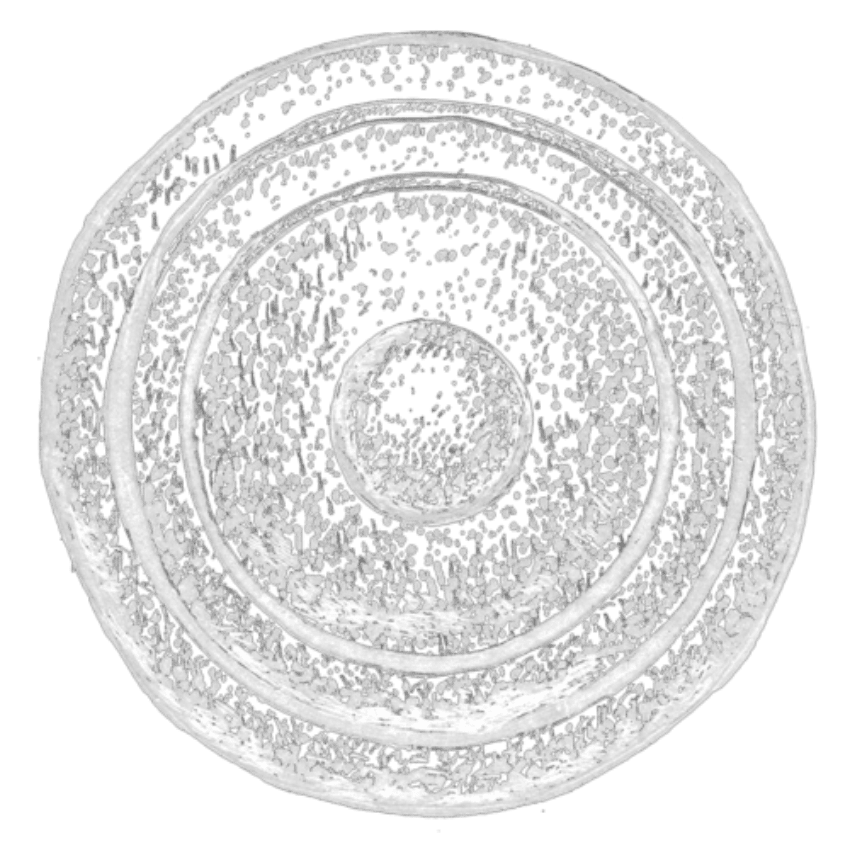
"As an organiser it’s very hard to bring people to more adventurous approaches in music and you suffer from this certain [perceived ] image about it, it’s a really tricky thing. Somehow I hope that my music has this serious element and it’s valued and stuff, but that it’s accessible for everyone, that’s my wish"
And, is there any aspect of your performance (or of the performances, knowing that there’s not just one style) — of a kind of ritual, in the music?
I mean, for me there is in all music. I would never say that it directly linked with the gamelan because it’s something different for a lot of people and it’s not my culture, but for me, every time I sit behind the drums, yeah. When I play, it’s something that I take very seriously, music, so it’s why I would always come into something like this with as much respect as possible towards the culture, and the instruments. But for me it’s the same in all music.
When I play it’s a really serious affair. It doesn’t mean that the music is going to be serious, but I do take it seriously and I always want to do the best I can. So that means when I get ready for a concert there’s an element of ritual, with Nist-Nah even more so — there’s so much stuff to set up and it’s heavy, it’s really physical getting it all together, so there is an element of ritual around that.
And then, I kind of need to be in a particular headspace. I’m not comfortable when you just go into a concert and it’s just like “ah, I’m just doing a gig”. People have come — even if it’s not many people sometimes — and they’ve probably paid for it so I want to do the best I can, for them and also for the music itself. In that sense, yes, there’s a ritual.
I’m curious about the differences — like you were saying earlier — about the Western “performance”, and that being quite an ego-led thing, you know, it’s your name written down and you say “it’s me, I’m gonna come and perform”, and there’s a difference between that and then the kind of “functional” music that we don’t really so much of in Western culture anymore, like music to drive away spirits or purify.
I’m asking this question occasionally to a lot of people I know, and they are predominantly electronic musicians, because I do think there is this running thread throughout all cultures that — even if the music is made for sheer enjoyment — that itself is a very direct callback to the earlier forms of music.
Totally agree. And for me, to be honest, maybe dance music and club music is way more important than art music, you know? Firstly, it’s more accessible for a lot of young people. A lot of the stuff I’m involved in, it’s really frustrating how small it is, in the presentation, in terms of who it touches.
So you’re totally right and it’s a good point. Indonesia’s a good example, [music] is an everyday thing, it’s not like “I’m doing a concert and I need to be really serious about it”… music is like that for me too. I teach, and I’ve always played in different contexts for different people, but some of the art settings I’ve played in are really pretentious, small worlds. This whole thing about popular music, or dance music, or electronic music, being somehow less worthy or something? It’s ridiculous, for me it’s more worthy in that its actually heard.
People need to go out and get wasted, or whatever it is you need to do to have some kind of real and meaningful experience… I would hope that my music gives that in the same way that someone playing at 5 o’clock in the morning in a club could too; it’s the same thing.
As an organiser it’s very hard to bring people to more adventurous approaches in music and you suffer from this certain [perceived ] image about it, it’s a really tricky thing. Somehow I hope that my music has this serious element and it’s valued and stuff, but that it’s accessible for everyone, that’s my wish.
So to find a way that it’s possible to perceive depth in it in a way, if you want, but you can also just lose yourself and enjoy.
Yeah totally! I think the whole thing about intellectualising it too much is a problem from the start. For me when I listen to people like Coltrane and other (what could be considered to be) figures in “serious” music, there’s always a kind of beauty and simplicity in the music that anyone could benefit from, and I’ve had that experience myself. I’ve played some really complicated, not “easy” music to listen to, but if it’s approached in the right way and presented in the right way, I feel like it comes across. And I would hope that my music has that element too, that physical element where it hopefully touches people and it goes beyond needing to have an intellectual understanding of that music to be able to appreciate it.
But in Europe it’s a problem. Everything is separated, you have a jazz club, an electronic music club or whatever, experimental music series, and rarely these things are mixed.
I grew up in a musical environment way more mixed. I was playing the same night as electronic music acts, I worked with heaps of them, or a grindcore band and then a techno thing or whatever. Indonesia is still very much like that.
When there’s no money, things aren’t so separated. When you’re in environments where people are hungry for stuff… people are maybe a bit more open.
Inverted Audio is an official media partner of REMAIIN.
